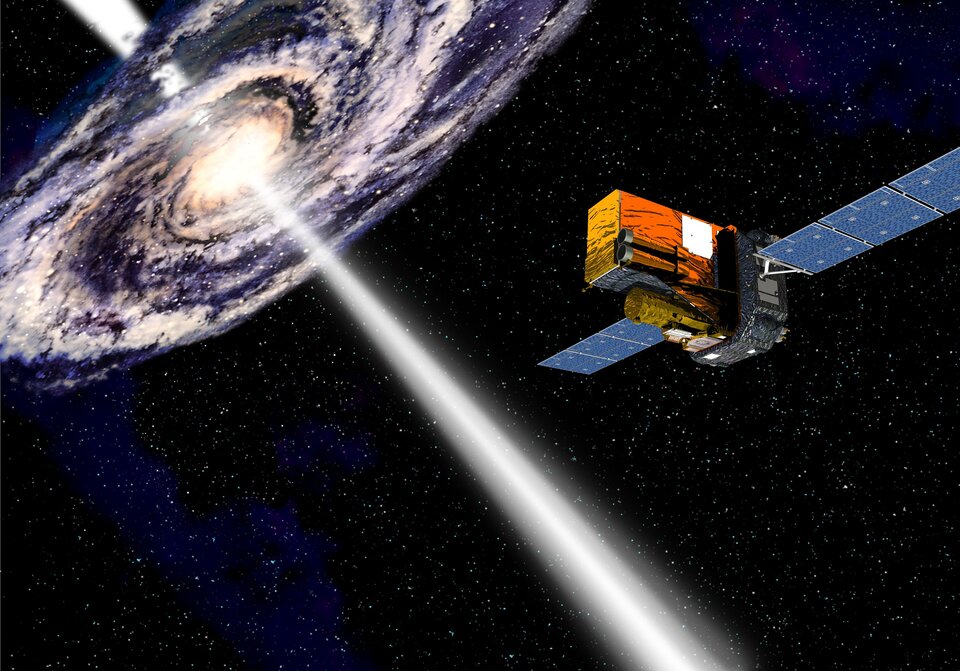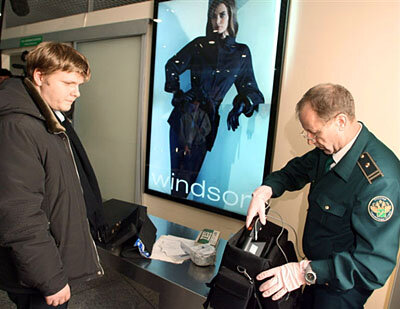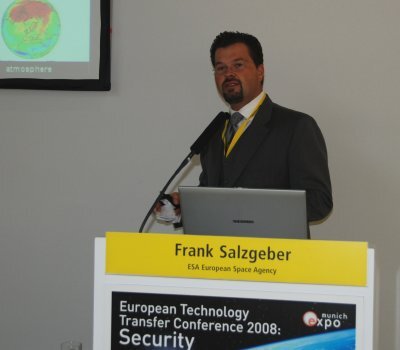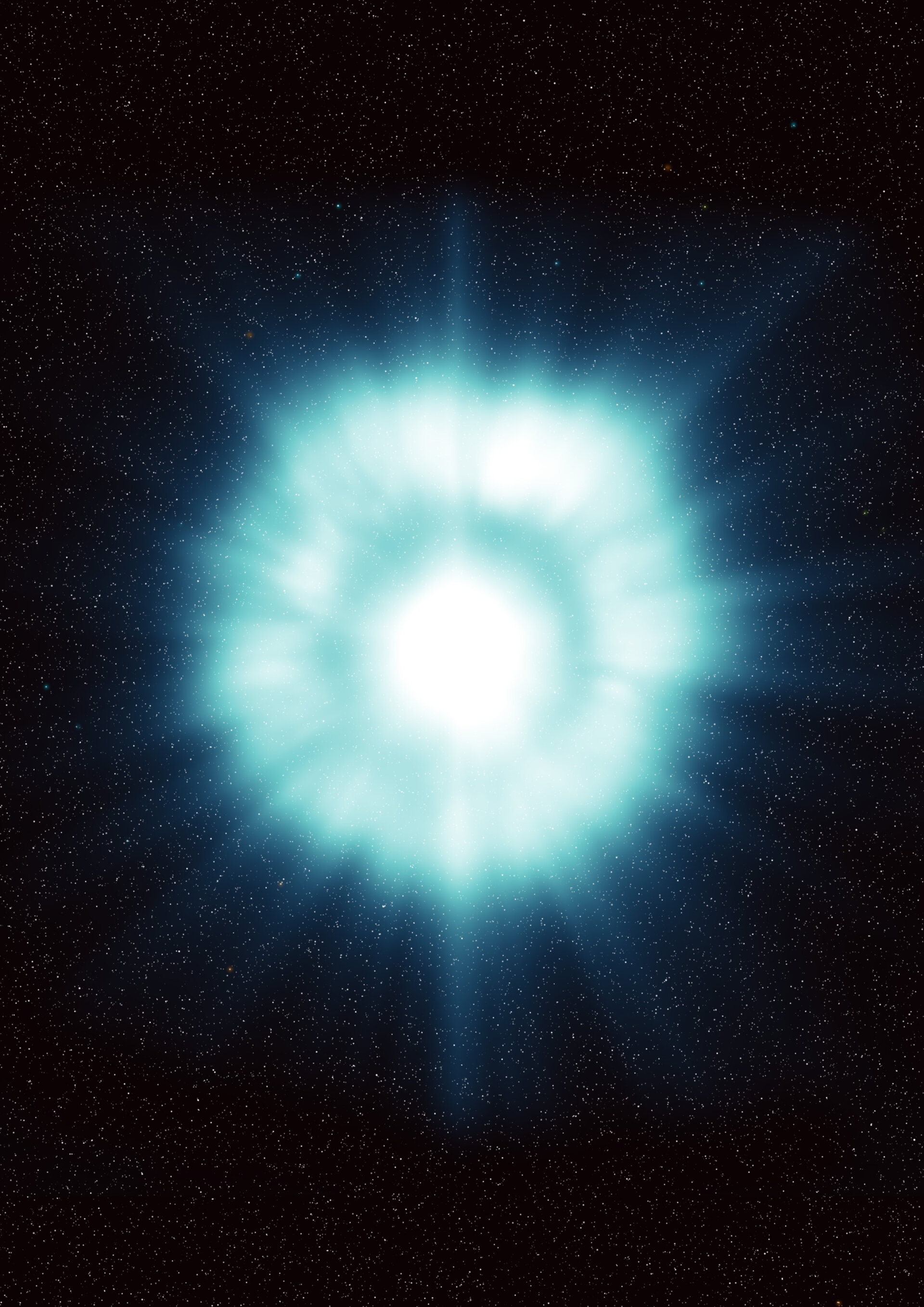Detecting dirty bombs with ESA gamma-ray technology
Company using ESA developed gamma ray detection technology has been awarded potential 222 million US$ contracts with US department of homeland security.
The European Space Agency has supported the development of technology for gamma ray astronomy for over 40 years. With ESA’s and UK’s technology transfer support, British company Symetrica developed a unique technology based on gamma-ray detection equipment used in ESA's INTErnational Gamma-Ray Astrophysics Laboratory (INTEGRAL), which can detect and accurately identify radioactive threat materials as used in dirty bombs.
Unique portable dirty bomb detection device

Symetrica was formed in 2002 to develop and commercialize unique radiation detection and identification technology. Through UK and ESA Technology Transfer support, contact was established with Smiths Detection, a world-leading provider of explosives trace and X-ray detection systems.
In 2006, Symetrica announced that its partnership with Smiths Detection has led to the award of a contract with a potential total value, including options, of 222 million $, by the U.S. Department of Homeland Security’s Domestic Nuclear Detection Office to provide next-generation radiation gamma ray detection and identification systems.
Gamma rays are, generally speaking, what is known as radioactivity. A gamma ray detection device determines the energy and the count rate of gamma rays emitted by radioactive substances, whereas the well-known Geiger counter only determines the count rate.

Most radioactive sources produce gamma rays of various energies and intensities. By detecting and analyzing them, a gamma energy spectrum can be produced. It is a kind of radiation fingerprint, which can tell what kind of substance one is dealing with and how much.
In space, this technology is used in astronomy applications, such as in ESA’s International Gamma-Ray Astrophysics Laboratory (INTEGRAL). INTEGRAL, launched in 2002, is detecting some of the most energetic radiation that comes from space. With its gamma ray technology, it is able to detect violent explosions, the formation of elements, black holes and other exotic objects in the Milky Way, the cosmic neighbourhood and much further, in distant galaxies at the edge of the observable universe.
140 million € deal for human portable radiation detection system

Detection of illicit traffic in radioactive materials, which could be used to make dirty bombs, is off very high priority for the national security in the US. Special nuclear materials, which could constitute a threat, must also be identified between naturally occurring radioactive materials, such as clay tiles, ceramics or bananas, and a range of legally transported radioactive materials such as medical isotopes. Effective screening devices are required for personnel and freight at, for example, ports and borders.
Detection and identification of dangerous radioactive material has to be quick and reliable, without disrupting the normal flow of commerce. Symetrica and Smiths Detection are jointly developing a unique handheld and backpack Human Portable Radiation Detection System (HPRDS) tailored to meet those criteria. The device features space-based radiation detection hardware and signal processing software for use by emergency responders, border patrol agents, customs and coast guard officers and other law enforcement personnel. The detectors can identify and determine the location of incoming radiation and reliably discriminate between normally-occurring radioactive materials and potential threats.

A growing safety demand all over the world and rising safety standards not least due to the international terrorist attacks of the previous years caused a boom in security business and with it an omnipresent crave of the security industry for innovations and top-notch technology to gain a competitive advantage. That is why 2008 European Technology Transfer Conference, initiated by ESA’s Technology Transfer Office, put focus on the subject of security.
”The transfer of space technology into the security sector has huge potential, but unfortunately is yet a rather unexplored field”, says Frank M. Salzgeber, Head of ESA’s Technology Transfer Programme.
”Symmetrica’s success story was facilitated with the help of ESA space technology, and I am convinced there are a lot more of slumbering technology treasures to be discovered by the security business in space technology. This will not only benefit both industries, but also people everywhere, as it will make our world a safer place.”
ESA's Technology Transfer Programme Office (TTPO)
The main mission of the TTPO is to facilitate the use of space technology and space systems for non-space applications and to demonstrate the benefit of the European space programme to European citizens. The office is responsible for defining the overall approach and strategy for the transfer of space technologies, including the incubation of start-up companies and their funding. For more information, please contact:
ESA’s Technology Transfer Programme Office
Frank M. Salzgeber
European Space Agency ESA
Keplerlaan 1, 2200 AG, Noordwijk ZH
The Netherlands
Phone: +31 (0) 71 565 6208
Email: ttp @ esa.int
Website: http://www.esa.int/ttp
This article was published in the "Space for Business", ESA’s Technology Transfer Programme Newsletter, issue 2, 2008.





